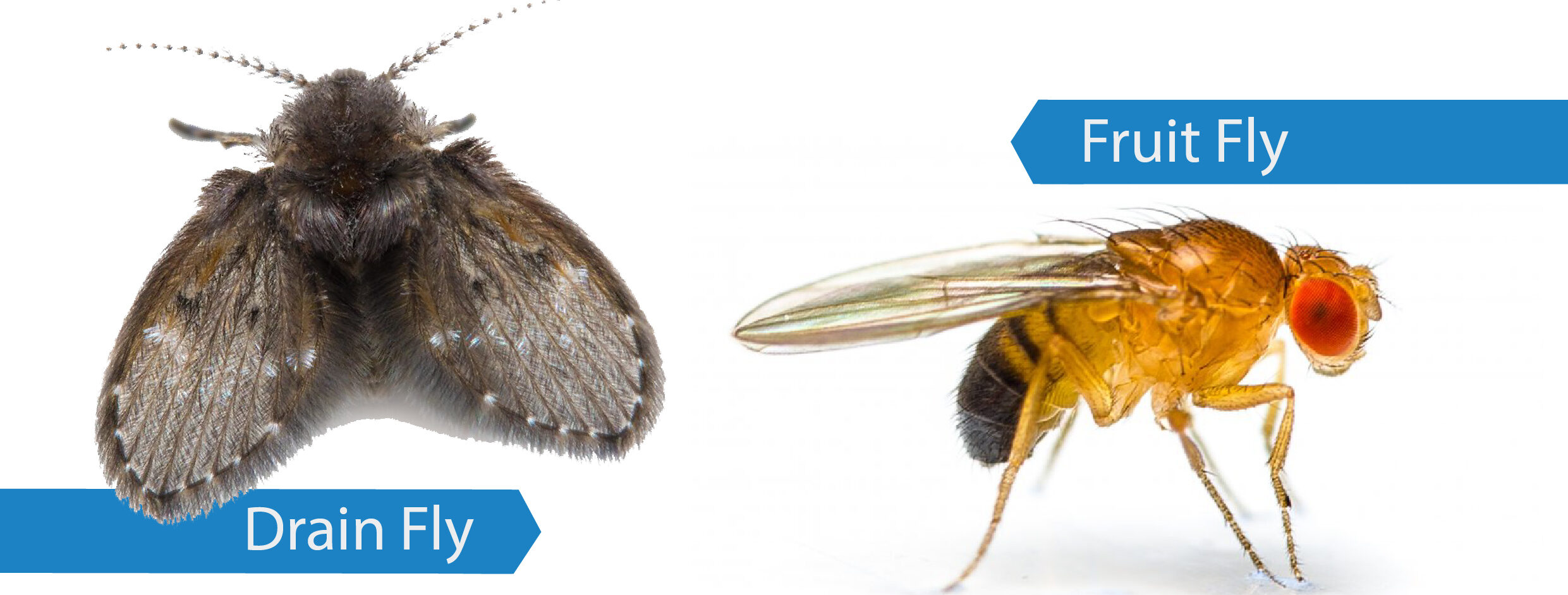How to Get Rid of Tiny Flies – Drainage Flies
Are you worried about Tiny Flies, It’s like to Butterfly? This is Moth Fly or Drainage Flies. They feed on decaying organic material in mud, moss or water. In homes, the adult flies are likely found on the walls of the bathrooms, kitchens, basements and other locations. Where sewer drains and plumbing fixtures are located. The flies are poor fliers are found close to the drain or area of origin. Moth fly or Drainage Flies larvae are known to live in drain traps. garbage disposals, toilet tanks, sides of drains and overflow pipes in homes, septic tanks and moist compost. They have also been found in dirty garbage containers. rain barrels and tree holes and other wet situations where organic material accumulates.
Adult Drain Flies
Adult drain flies are tiny (1/5 to 1/6 inch long). fuzzy, dark or grayish insects with the body and wings densely covered with hairs. The antennae are long (13 segments), with each segment being bead-like and having a whorl of long hairs. Wings are longer than the body and are often held roof-like over the body when at rest. Some Drainage Flies species hold the wings out to the side. Which gives them a moth-like appearance—hence the name Drainage Flies or “moth fly.” They are weak fliers and make irregular. hesitating flights covering only a few feet in short, jerky lines. Eggs are tiny. brown or cream-colored and are laid in irregular masses of 10 to 200. Larvae are legless, about 3/8 inch long, wormlike and gray, with both ends somewhat darker.
Drainage Flies larva
Drainage Flies larvae grow and feed in polluted, shallow water or in highly moist organic solids. The eggs, larvae and pupae can be found in the bacterial muck. slime or gelatinous film often accumulating on the sides of drains and overflow pipes in homes. sewage disposal beds, septic tanks and wet compost. Drainage Flies have also been found in dirty garbage containers, rain barrels and tree holes. Eggs are laid in and on the moist media. and they hatch in 32 to 48 hours at 70°F.
Larvae feed on the decaying organic matter, bacterial films, algae and sediment found in the moist environments. Larvae mature in 9 to 15 days and are considered to be part of the organisms useful in cleaning sewage water and breaking down wastes. It’s live in the drain pipes or wet organic matter and breath by extending tube-like tails to the surface. Pupae occur in or on the surface of the breeding media. and the new Drainage Flies adults emerge after 20 to 40 hours.
Precaution of Drainage Flies
Alternative methods include cleaning pipes and traps with a good, stiff, long-handled brush. It is best to remove the drain trap and use a “snake” in clogged. drains to clean the pipes of all gelatinous material. If using mechanical means, flush lines with boiling water and bleach to remove any material left behind by the cleaning process. Caustic drain cleaners may also be used. although they are not as effective as other means and must NEVER be followed with bleach since Chlorine gas can be released. if the two mix in the drain line. Clean dirty garbage containers, wet lint under the washing machine. and even standing water in containers under houseplant pots. Outside the home, inspect air conditioners, bird baths. Shallow stagnant pools of water and sewage treatment facilities upwind as adult flies will travel with the wind.
Treatments of Drainage Flies
Fly paper strips and UV-light insect traps can capture some of the flies. but will not eliminate an infestation. If need to permanent solution call a professional pest control Dubai services company. Who can give you the appropriate flies control services. You can also Contact Us.
More updates visit ‘ Pest Control Dubai‘ or Social Media.


